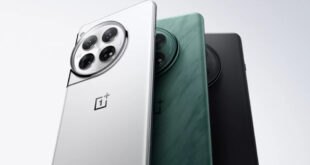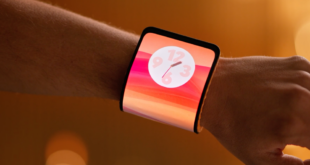 Image copyright
Image copyright
Thinkstock
Have you ever panicked when asked to choose the wine in a restaurant?
If you’ve ever been handed a wine list the size of an encyclopaedia in a posh restaurant and succumbed to mild panic, you’re not alone.
Many of us feel sweaty palmed when having to choose from a bewildering array of wines we’ve never tasted or even heard of, especially when we’re trying to impress a hot date or a potential client.
And traditionally snooty sommeliers – wine advisers to the uninitiated – trying to embarrass us into spending more than we can afford, only make matters worse.
Luckily there are a growing number of wine apps offering to help us navigate the worrying – but wonderful – world of wine.
“I used to hate having to choose wine in restaurants… it was horrible,” says Matt Gertner, the Prague-based founder of wine app start-up Corkscrew.
“I had no idea what I was doing. So I wanted to develop an app that would take all the stress out of the process.”
His free app, which has just launched in the UK, aims to remove wine list angst by loading all the restaurant’s data into its app first, allowing you to choose the wine in advance.
Image copyright
Corkscrew
Corkscrew aims to be the “sommelier in your pocket”
“Most good restaurants publish their wine lists and menus online these days, so Corkscrew’s webcrawler software ‘scrapes’ all this data then analyses it,” says Mr Gertner.
But what differentiates his app from others, he maintains, is its wine and food-matching engine.
Matt Day, the firm’s in-house sommelier, has identified about 10,000 wine flavours based on grape variety, country, region, vintage, acidity, fruit content and so on, and come up with recommendations for each type of food. The higher the percentage figure the app comes up with, the better the wine match.
But isn’t this just Mr Day’s personal opinion?
“There is a science to food and wine pairing,” he tells the BBC. “It’s not all subjective.”
Image copyright
Corkscrew
Corkscrew’s sommelier Matt Day says food and wine pairing is a “science”
Corkscrew has amassed a database of 15,000 wines so far from more than 100 London-based restaurants and plans to expand its list to supermarkets as well.
“Over time we’ll be able to personalise the recommendations based on your choices and incorporate customer ratings as well,” says Mr Gertner.
The data on users’ favourite wines and the prices being charged for them, could be valuable to producers, retailers and restaurants, but only once the app has attracted “thousands of users”, he admits.
And Corkscrew has a lot of catching up to do on that score.
Label recognition
San Francisco-based wine app Vivino claims 21 million users and identifies wines from photos that users take of bottle labels and wine lists. The company says more than 300 million wine labels have been scanned so far.
Once identified, the app gives ratings, reviews, average prices and suggested food pairings for each wine. Users can save wines they like and upload their own reviews and ratings.
Image copyright
Vivino
Vivino co-founder Heini Zachariassen believes his app’s tech is “world class”
Most app reviewers seem to agree that it has the best image recognition engine of all the wine apps out there, which is no mean feat, although taking photos of wine lists in restaurants is not always that successful, given the typically low lighting in such establishments.
Corkscrew’s Matt Gertner says he tried developing the same sort of label recognition system three years ago but it proved “very difficult – the technology was just too unreliable”.
This is why he went down the alternative route of ingesting online wine list data and concentrating more on the recommendation algorithm.
Vivino’s co-founder and chief executive Heini Zachariassen tells the BBC: “The image and text recognition technologies Vivino uses are world class, and innovations we are incredibly proud of.
“Our technology recognises the wine’s name, vintage, style, producer and more, in order to give our users the most accurate information.”
Image copyright
Vivino
Not all wine apps are as good at label scanning as others
The biggest challenges they face are low-quality, unreadable photos and duplicate entries, he says. So a team of humans – yes, they still have their uses – manually adds missing data and corrects errors to clean up the database.
“We are the first to attack this issue at such a massive size and scale,” says Mr Zachariassen.
Vivino is doing so well it feels confident enough to charge £3.99 a month for a premium version of the app. Most other apps are free. Users can also find and buy wines through the app.
Popular alternatives include Delectable, another San Francisco-based firm recently acquired by wine portal Vinous; Wine-Searcher; and CellarTracker. But there are scores of others, some struggling to make money and keep up with the rest.
Health concerns
So what impact are such apps having on the wine industry as a whole?
Richard Halstead, chief operating officer at Wine Intelligence, a consumer research company, says: “People aren’t drinking as much wine as they used to, for health and cost reasons. But they are prepared to spend a bit more when they do, so apps that encourage people to make better choices will be welcomed by wine producers.”
Younger people in particular are more comfortable consulting technology to help them make difficult decisions, says Mr Halstead. And taking a bad bottle of wine to a dinner party is a social faux pas many of us would prefer to avoid.
Image copyright
Thinkstock
Wines by the glass are proving more popular in restaurants
“It’s how the industry will engage with these apps commercially that remains to be seen,” he says.
While Vivino can charge for its premium service, most apps generally are free, relying on income from advertising and marketing promotions.
But Corkscrew believes its ability to help diners choose wines by the glass will prove attractive to restaurants, because the profit margins are higher for glasses than for whole bottles.
“Wine by the glass is a really interesting trend,” says Mr Halstead, “because it fits in with the health concerns, and people are increasingly willing to spend more for an interesting experience.”
So perhaps this Christmas season, one thing you won’t have to worry so much about is the choice of wines. Cheers.
Follow Matthew on Twitter here
Click here for more Technology of Business features
 #Bizwhiznetwork.com Innovation ΛI |Technology News
#Bizwhiznetwork.com Innovation ΛI |Technology News



